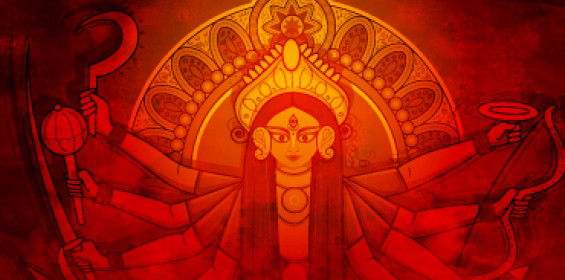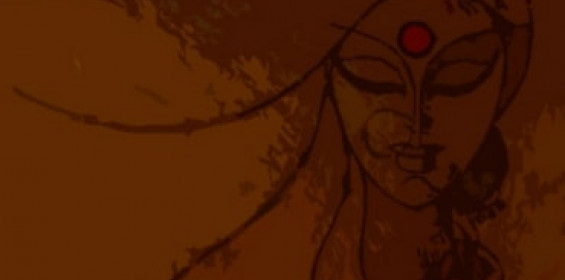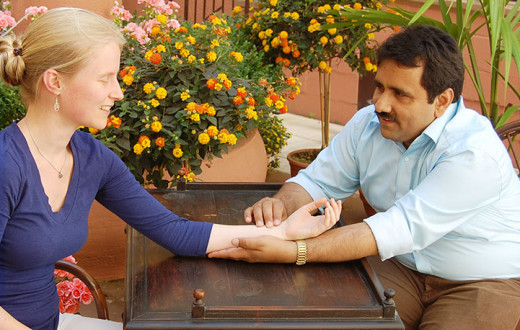Amazing facts about India.
In 336 BCE, Alexander set out to conquer Persia when he was barely 25 years old. Alexander’s victory over Persia and the kingdoms en route earned this Macedonian king the name, Alexander the Great. When Alexander the Great turned back for Greece from the banks of the Indus river, he wanted some treasures of Indian wisdom and craft. One of them was a metallurgical craft that Indians have perfected over millennia, a metal which was not crafted to perfection by the rest of the world: steel.
Yes, that was the gift Alexander desired to take back with him. A 100 talents of Indian steel. Talents is a Greek measure similar to the local word tola used in India today for weighing precious metals. King Porus of Sindh gifted the request as an act of friendship.
How did India learn this technique? Did she pioneer other metals too?
Bharath Gyan, a passionate research initiative, is painstakingly dotting the pieces together, foraging amongst lost remnants to keep the glorious past alive and known. Here are some lesser-known facts:

The true story of wootz steel
When the Europeans started trading directly with India in the 1600s, they went to the foundries of the Coromandel and Malabar coasts to procure Indian steel. (Kodumanal along with many other such production centers was one of the prime suppliers of quality steel for the world 2,500 years ago.)
In these foundries, smelting steel was called urukku in Tamil and Malayalam, and ukku in Telugu and Kannada. These words morphed into wootz on the European tongue.
Interestingly, the best bridges of England had wootz steel (or seric steel) imported for its construction, such as the Britannia Tubular Bridge over the Menai straits in the United Kingdom.
Thus was born a new name, a new brand for this same age old, fine, strong steel which developed in India around 300 BC. The same steel that Arabs and Persians used to silence their enemies as the famed Damascus swords. The Arabs even devised a phrase for it when they chopped off an enemy’s head. They called it ‘Jawab-e-Hind’, an answer by the Indian blade.
These swords were called Damascus because of the watery designs, which were the speciality on these swords. The word damas in Arabic means watery, wavy.
The 6th century Arabic poet, Aus-b-Hajr writes that “it was as though a trail of small black ants had trekked all over the steel when it was still soft.”
The world renowned Persian sabres are traced to iron pellets that came from the region of Golconda, in the land of the Telugus.
Gradually, it was steel that started going from India with the Arab tribes having learnt how to make swords. The western world got to learn of them as Damascus swords when the Crusaders went to Jerusalem and encountered the Saracens (the name by which Europeans referred to the nomadic Arab tribes between Syria and Arabia then).

Every year, over 10,000 ingots of this steel were exported from the Coromandel Coast to Persia and Iran. From there, it was sold to Europe until 1821 CE, fuelling a large appetite for steel. This was the dawn of the Industrial Revolution of Europe.
 Even the famed sword Excalibur of King Arthur could not do this
Even the famed sword Excalibur of King Arthur could not do this
Sir Walter Scott’s The Talisman is a fictional work based on the historical third Crusade that took place around 1187 CE. The story contains a narration of the encounter between King Richard, the Lion Hearted, and Sultan Salahuddin or Saladin.
While Richard breaks a steel bar into two with a slash from his sword Oblivion, Saladin offers to slash a cushion and a wisp of silk using his Damascus sword.
On this occasion, Richard is quoted as saying that even the famed sword Excalibur of King Arthur, could not cut through something like silk which offers no resistance.
Isn’t our cultural heritage fascinating? Equally intriguing is our tradition of healing and health. Thousands of years ago, our ancient sages unlocked techniques and wisdom to maintain holistic health. Know more about these secrets at The Art of Living Meditation and Breath Program.
Discover India's spiritual heritage and learn about the mind & breath. I'd like to know more>>
This legendary steel and its many stories became history after the British invasion of India. Swords and daggers of wootz steel can be seen in many museums of the world even today.
The fine art of smelting zinc
Iron, copper, and zinc are the three most important metals. Of these three, zinc is one of the most difficult metals to smelt.
Zinc becomes liquid at around 420 degrees celsius and evaporates at around 900 degrees celsius. Unless the liquid zinc is captured beyond 400 degrees celsius, it will evaporate. Due to this characteristic of zinc, nobody across the world could smelt zinc except those in many villages of the Telugu land where zinc smelting was practiced over the last few thousand years.

The metalsmiths of this region used ingenuity to create the ‘Adha patana yantra’. They created an inverted furnace where the heating was on the top and the cooling chamber was at the bottom. When the zinc ore melted in the heat, the liquid zinc would come down and collect in the bottom cooling chamber before it could evaporate.
This knowledge was kept within the community and for hundreds of years. Thousands of tons of zinc was exported to different parts of the world. India held a monopoly in this trade.
Zinc was not limited to the Telugu region alone. It was prevalent in other parts of India too, like the Tamil land, and Rajasthan. For instance, Zawar in Rajasthan also witnessed large-scale production of zinc in the 13th century CE (at least three centuries before China began local production.)
In 1552 CE, in the Ming dynasty period, a Chinese trader learnt how to smelt zinc in India. He took the idea to China and in 1552 he started to smelt zinc in the same way. In Chinese, they called it tuttanag or tutamu. This Chinese name is very similar to tuttinagamu- the Telugu name for zinc from where the Chinese took the idea. The Chinese started exporting zinc to Europe in the 1700s.
In 1730, William Champian of Bristol went to China, learnt how to smelt zinc, and successfully smelted zinc for the first time in England. He called it tutty. Thus, from the Chinese name of tuttanag, which came from the Telugu name, tuttinagamu was born the English tutty. The word, zinc, came from the Germans.
Until then the production of metallic zinc in Europe was unknown. India held the monopoly for several millennia.
The technique of smelting zinc went from India to China to England and from there to the rest of the world.
The material has been sourced from @bharathgyan. This research team, led by a passionate husband-wife duo - Dr. DK Hari and Dr. Hema Hari, unearth some of India’s untold stories and make them contemporary. You can click here to buy any of their books on Indian civilization.





























